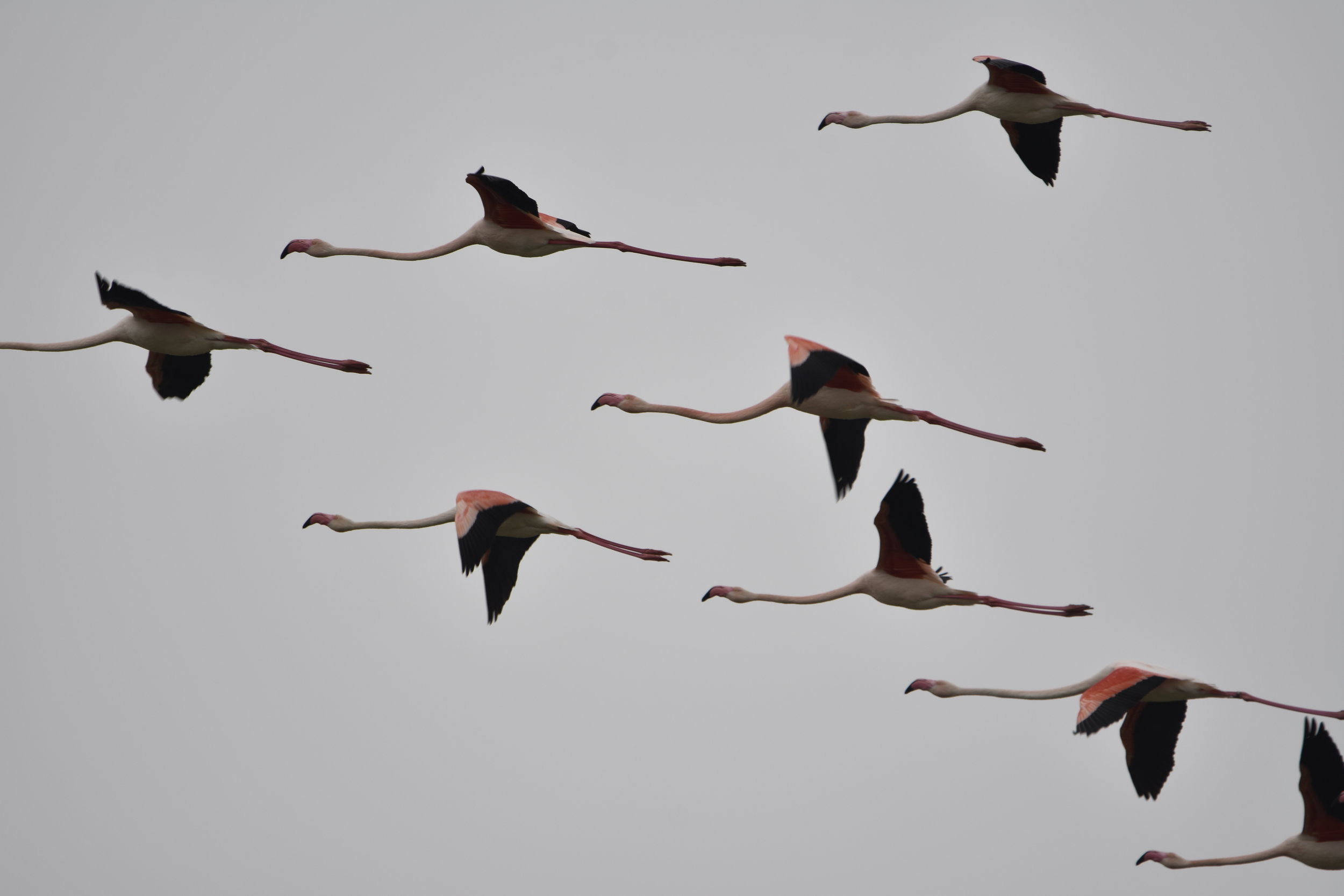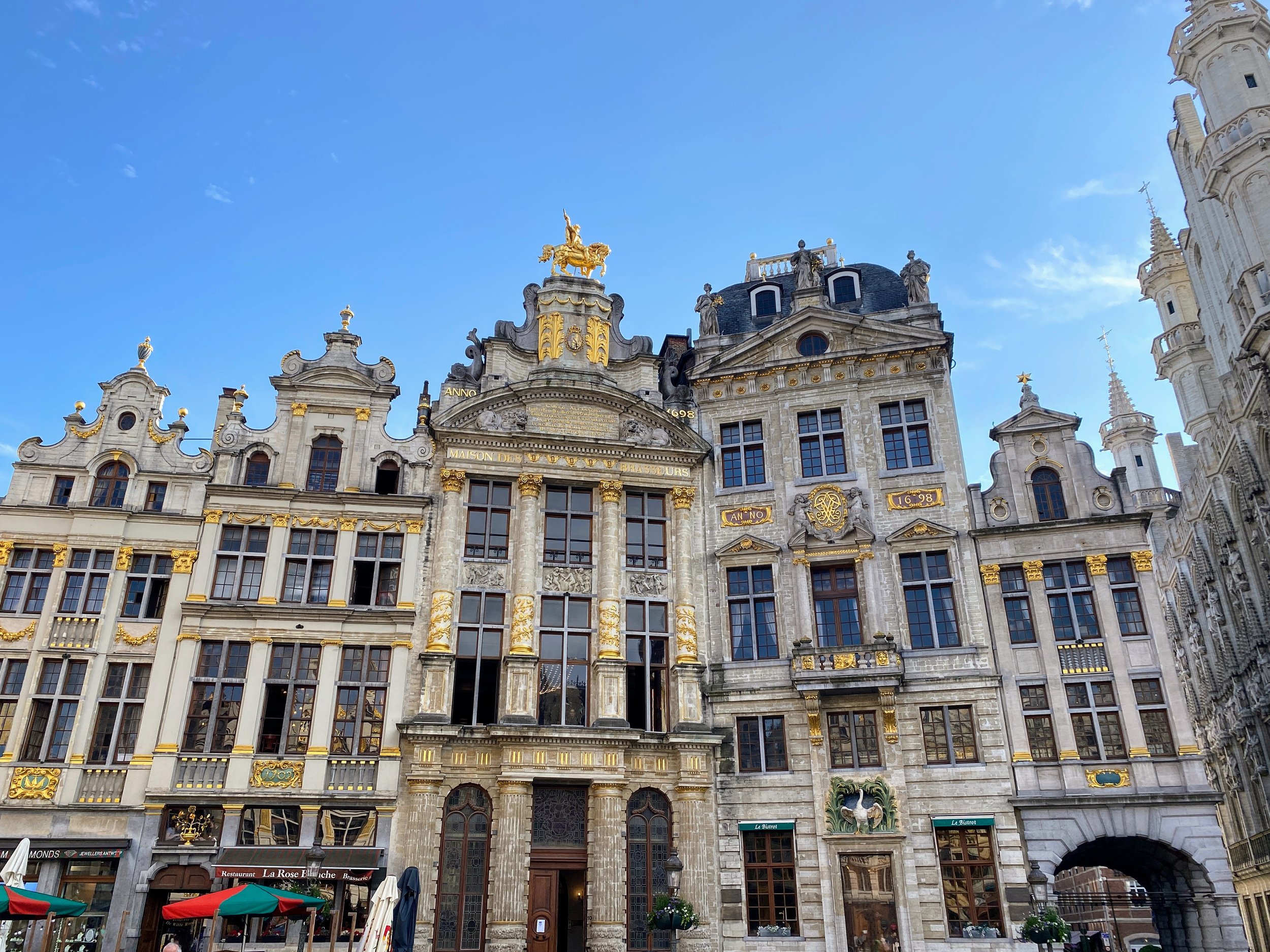Flamingo watching in the Po Delta Park
The Po Delta Regional Park, (Parco Regionale del Delta del Po) is the perfect place to admire Italian nature at its best. The vast Po Delta is a biodiverse natural park located in northern Italy in the Emilia Romagna, Ferrara and Ravenna regions. The park offers exceptional biodiversity which is perfect for seeing wildlife and flamingoes through the national reserves. The area is also a cultural gem which offers Roman ruins and traditional fishing villages, and UNESCO World Heritage Sites.
After doing our research we decided to visit the Po Delta. As we get out of the car and it's 45°C outside, the air is humid and sticky with a smell of salt that twitches your nose the moment you step outside. Under this blazing hot, the hubby and I were about to embark on our next excursion, visiting the flatlands of the Po Delta National Park to see the beautiful Flamingos. The delta is only 1 hour away by car from Bologna and it is a good half-day or day trip from the medieval city.
What is the Po Delta?
The Po Delta Park was established in 1988 and covers an area of 66,000 hectares making it one of the most important wetlands in Europe and the largest in Italy. The protected area covers about 54, 000 hectares of Emilia Romagna region, extending between the Province of Ferrara and the Province of Ravenna, making this the Parco Regionale del Delta del Po dell'Emilia-Romagna. In the Veneto region, the park has approximately 12,000 hectares in the province of Rovigo, where the park is called the Veneto Regional Park.
The area was awarded to be one of the UNESCO World Heritage Site status and the MAB Biosphere Reserves by UNESCO due to its biodiversity and the key role that the city of Ferrara has played in the region throughout the century.
The park is a hidden gem but a crown jewel for history buffs and animal lovers. And since we are in Italy, there is also some delicious food typical of the region.
The region is a bird sanctuary with almost 300 registered species living here; a true heaven for bird lovers. The Po Delta Park is formed by Italy’s largest river Po. The river dissolves into the sea forming endless streams of water, lagoons and swamps. These special environments of valleys of freshwater and brackish water allow for the beautiful Flamingos to call this home part of the year. Inland, in the Po di Volano’ Nature Reserve, you can see some deer! In the Mesola Wood Reserve where you can find different duck species and herons. The pine forest di Classe was immortalized by Dante Alighieri in the XXVIII canto of the Divina Commedia. You can discover the circular route called “The Oaks of Dante” to trace back his footsteps.
Besides the natural wonders, the park offers beautiful historical monuments and cities. Among the most important you have the Pomposa Abbey dates back to 1026, the city of Comacchio, the parish church of San Giorgio, in Campotto and the Basilica of Sant'Apollinare in Classe, consecrated in 547, to name a few. Along the wetlands, you can also visit the pine forests.
Ravenna is the largest and historically most important city of Romagna. The city has played a crucial part during important historical moments, it was capital three times, during the Western Roman Empire (402-476), the Kingdom of the Ostrogoths (493-553) and the Byzantine Exarchate (568-751). Ravena has many of its monuments listed by UNESCO World Heritage Site and Italian sites Heritage of Humanity.
Ferrara has an important cultural heritage of the Renaissance period. Lastly, you can learn more about the ancient Pickling Factory (Manifattura dei Marinati) in Comacchioto and learn about the bygone traditions of eel fishing and pickling. In Ravenna you can also do an excursion to the Pineta di San Vitale and Piallassa della Baiona, in Punta Alberete to admire the herons flying over the Lamone River.
The region has enough activities to last a few days, while you are here, enjoy the beautiful sunsets in the waters.
What to do in Po Delta Park?
As we said, this huge park combines wetlands, agricultural land, forests, islands, lagoons, swamps, and marshes. There are multiple organized excursions or cycling and hiking trails designed to see the best in this area. The delta forever intertwines history and nature as mankind and animals have always co-existed here hand in hand.
We took a boat trip to better get a glimpse of this unique ecosystem. The “Comacchio's lagoons by boat” excursion takes you through the flamingo lagoon and the historical eel fishing huts of the latter times. The boat excursion takes around 2 hours and you can see the diverse range of aquatic birds like herons and egrets to name a few birds.
The region is also well-known to see flamingos, these long-leg birds have started to stay in the delta for the past years. The guide told us that due to global warming, the pink birds changed their migratory path and ended up in the region. And this was the reason we ended up here, to see these elegant birds up close. In the ancient Salt Pans of Cervia, you can also see flocks of pink flamingos.
On the historical side, you learn how, in the past centuries, fishermen were doing the traditional ‘lavoriero’, a trap placed in the water to catch eels. The fishermen understood that the eel migrates towards the sea to reproduce so they created traps to catch them in these moments. The tour stops in the old fishing huts to fully explain their lifestyle and the tools that they used to make daily catches that would later end up being a regional plate.
While we did enjoy the tour, I was disappointed that we did not see the flamingos up close as the tour did not approach them but you know, nature is always so unpredictable!
Flamingos in the Po Delta Park. Photo provided by Po Delta Tourism since we did not get a chance to see them up close
The park has many entrances and activities besides admiring the flamingos and learning more about eel fishing.
From the ports of Goro, Gorino or Volano you can take a boat trip or do water sports such as kayaking. The boats are small, silent electrically powered boats, perfect for the shallow waters and dense reed thickets around the Po Delta.
From Porto Garibaldi, the boats will sail up the Adriatic Coast and go to the Island of Love.
Departing from the Stazione Foce and Valle Campo, the Comacchio Lagoons, take you deep into the swamps and to the flamingos. Here you can combine the water activities with biking tours or horseback riding. You can enjoy the area on foot, by boat, by bike or on horseback.
As in every region in Italy, there is delicious food. Here, the food is like the area, mixing the best ingredients from land and sea. The regional cuisine has eels, clams, mussels, shrimps, sea bream and sole; sea bass, rice, radicchio and asparagus; squash, mushrooms and truffles. Don’t forget to see if there are foodie events. The region is part of the thematic “food valley” itineraries in Emilia-Romagna. Another itinerary idea is Italy’s Motor Valley.
practical information
How to book? Go to Po Delta Tourism . and choose the tour that you want
Price? Prices vary but they are around € 12,00 for adults, € 9,00 for children aged 7 to 16 years old, children under 7 free.
- Getting there? I would seggest to rent a cat but you can also arrive to the delta by bus and train. The region can be accessed from Bologna or from Venice.
I hope this article gave you a few travel ideas for your next trip!
Do you like the content? Why not help me by buying me a virtual cup of tea?
Disclaimer: Po delta Tourism gave us one free excursion. All opinions are my own
PIN IT FOR LATER!













![Best European cities to visit in March [+30 ideas]](https://images.squarespace-cdn.com/content/v1/58ae4fa346c3c4b688b9ac9f/1676418626875-LE8N0ADXJ33Q8CGEUPBS/Things_to_do_in_Lake_Como_Comer_See_Reisetipps+Image+2021-06-09+at+16.55.16+%281%29.jpeg)